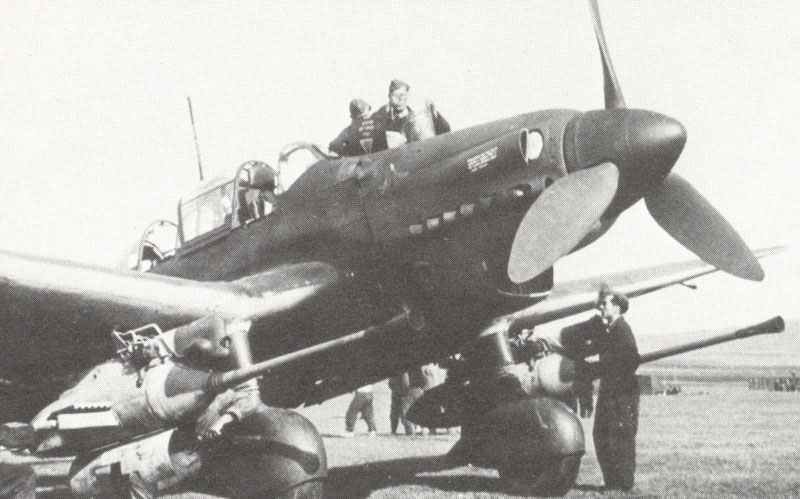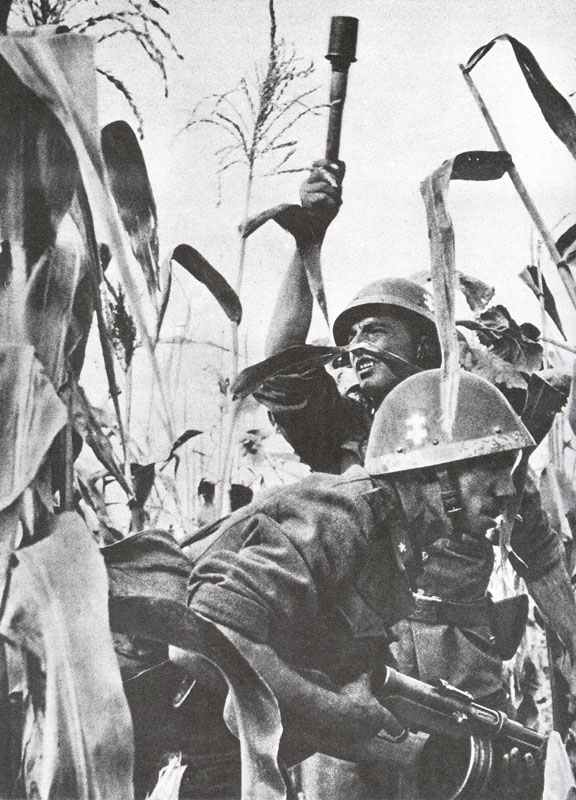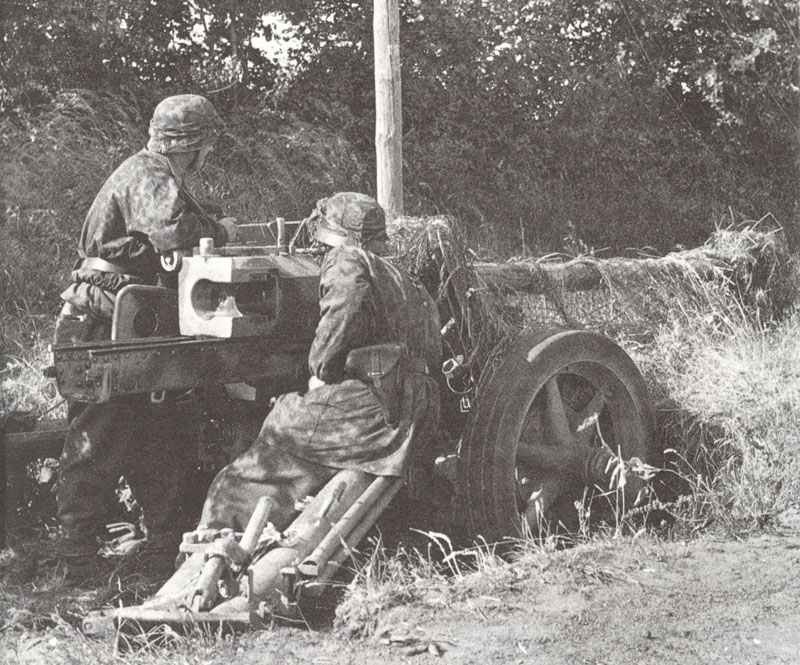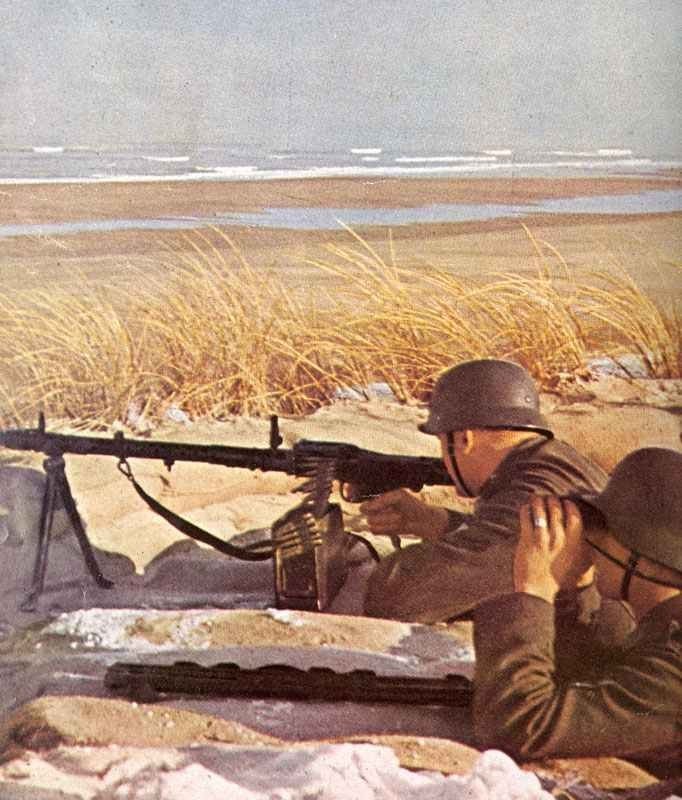German anti-tank and ground attack aircraft Junkers Ju 87G.
History, development, service, specifications, statistics, pictures, and 3D model.

Junkers Ju 87G
Type: anti-tank and ground-attack aircraft.
History:
Table of Contents
The last combat variant of the Ju 87 Stuka and successor of the Junkers Ju 87D was the Ju 87G series. This Stuka variants were built by conversions of the ubiquitous D models.
Only the Ju 87G-1 became operational. The Ju 87G was a specialized anti-tank version, fitted with two BK 3.7 (Flak 18) guns hung under the wings just outboard of the landing gears. This 37-mm-gun was a formidable weapon weighting over 363 kg (800 lb) and in wide service as ground-based Flak (anti-aircraft artillery) equipment.
In June 1942 a trial installation was tested in a converted Ju 87D-5 and found more effective than the many other Luftwaffe anti-tank aircraft such as the Henschel Hs 129 and Junkers Ju 88P. Fed by clips of six rounds, the BK 3.7 had a muzzle velocity with armor-piercing ammunition exceeding 850 m (2,790 ft) per second, and the greatest exponent of the Ju 87G-1, Hans-Ulrich Rudel, was ultimately credited with the personal destruction of 519 Russian armored vehicles. It was he who, despite being shot down 30 times, flew 2,530 combat missions and continued to lead Stuka formations in daylight long after other Stuka groups had replaced their vulnerable aircraft with the Focke-Wulf Fw 190 F.
The Ju 87G-1 could carry bombs instead of guns, but had no dive-breakes. The removal of dive-bombing equipment made the G-1 most unrepresentative among Stuka variants.
Another variant produced by converting aircraft of the Ju 87D series was the Ju 87H dual-control trainer. No trainer had been considered necessary in the early days of the Ju 87 series, but by 1943 the art of surviving in the type had become so specialized and important on the Eastern Front that even experienced bomber and fighter pilots had to go out with a Ju 87 instructor before taking their places in the decimated ranks of the ‘Stukagruppen’.
Users: Germany.
Specifications Junkers Ju 87G-1
Specifications:
| Ju 87G-1 | Specification |
|---|---|
| Type | anti-tank and ground attack aircraft |
| Power plant | one 1,400-hp Junkers Jumo 211J-1 inline piston engine |
| Accommodation | 2 |
| Wing span | 49 ft 2 in |
| Length overall | 37 ft 8 in |
| Height overall | 12 ft 9 in |
| Wing area | 362.6 sq.ft |
| Weight empty | 21,738 lb |
| Weight maximum loaded | 14,550 lb |
| Max wing loading (D-1) | 40.23 lb/sq.ft |
| Max power loading (D-1) | 10.39 lb/hp |
| Max level speed | 195 mph |
| Cruising speed | 118 mph |
| Initial climb | ? |
| Time to height (D-1) | 16,405 ft in 19.8 min (G-1 extremely poor !) |
| Service ceiling (D-1) | 23,950 ft (G-1 extremely poor !) |
| Range (D-1) | 954 miles |
| Combat radius (G-1) | 199 miles |
Armament:
| Ju 87G-1 | Specification |
|---|---|
| under wings | two 37-mm BK 3.7 cannons (80 rpm, velocity 2,790 ft.sec), fed by clips of six rounds |
| Armour penetration at 30° of guns | 68 mm on 100 meters; 43 mm on 500 meters; 22 mm at 1,000 meters; 17 mm at 1,500 meters |
| in the rear cockpit | one flexible 7.92-mm MG 81 (1,200 rpm, velocity 2,477 ft.sec) |
| Bomb load | 'useful' bomb load (up to 3,968 lb in D-5) when the underwing cannon were not being carried (no dive-bombing !) |
Service statistics:
| Ju 87 | figures |
|---|---|
| First flight (Ju 87D-5 with 37-mm guns) | June 1942 |
| Service delivery (Ju 87G-1) | 1943 |
| Final delivery | September 1944 |
| Unit costs | ? |
| Total production figure (all versions) | 5,709 |
| Accepted by Luftwaffe 1/39-12/44 (all versions) | 5,314 |
| Production (always for all versions) 1939 | 134 |
| Production 1940 | 603 |
| Production 1941 | 500 |
| Production 1942 | 960 |
| Production 1943 | 1,672 |
| Production 1944 | 1,012 |
| Production 1945 | - |
| Ju 87's in First Line Units 1.9.39 | 335 |
| Ju 87's (all) in First Line Units 20.9.42 | 379 |
| Ju 87's (all) in First Line Units 31.12.42 | 270 |
| Ju 87's (all) in First Line Units 10.1.45 | 293 |
Animated 3D model Junkers Ju 87G
References and literature
German Aircraft of World War 2 in Colour (Kenneth Munson)
Warplanes of the Luftwaffe (David Donald)
The Luftwaffe Album, Bomber and Fighter Aircraft of the German Air Force 1933-1945 (Joachim Dressel, Manfred Griehl)
Luftwaffe Handbook (Dr Alfred Price)
The Encyclopedia of Weapons of World War II (Chris Bishop)
Combat Aircraft of World War II (Bill Gunston)
Technik und Einsatz der Kampfflugzeuge vom 1. Weltkrieg bis heute (Ian Parsons)
Das große Buch der Luftkämpfe (Ian Parsons)
Luftkrieg (Piekalkiewicz)





